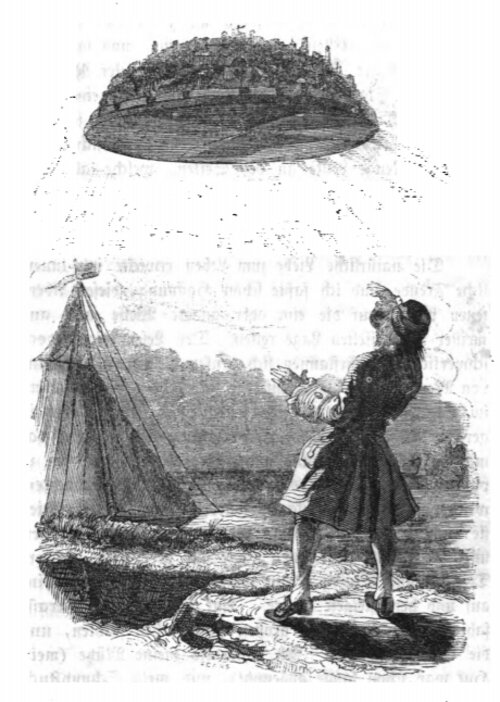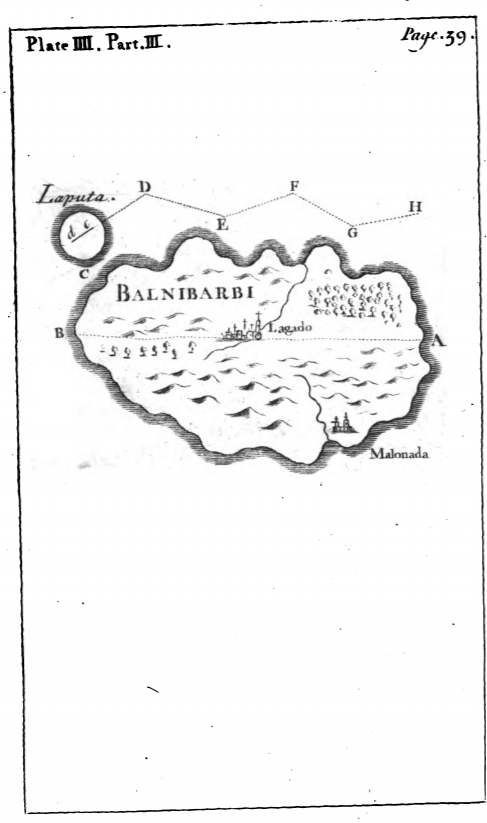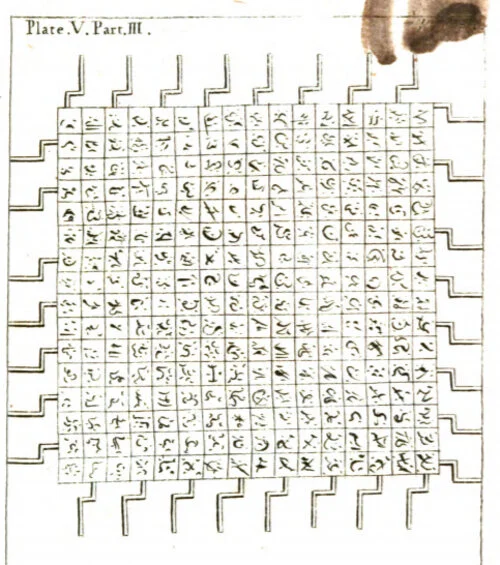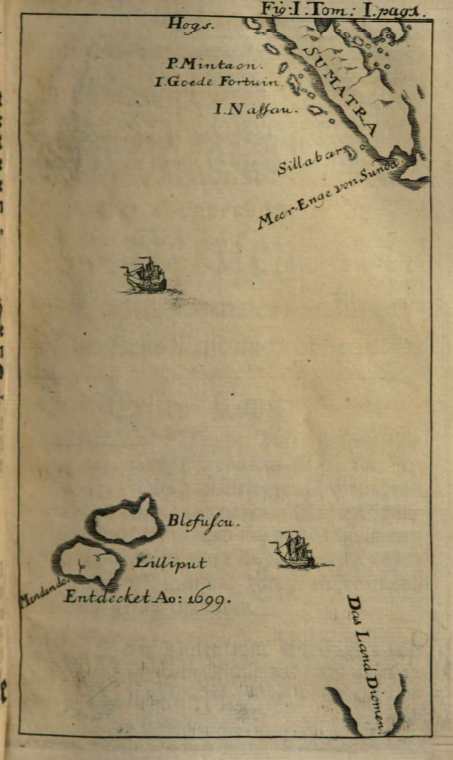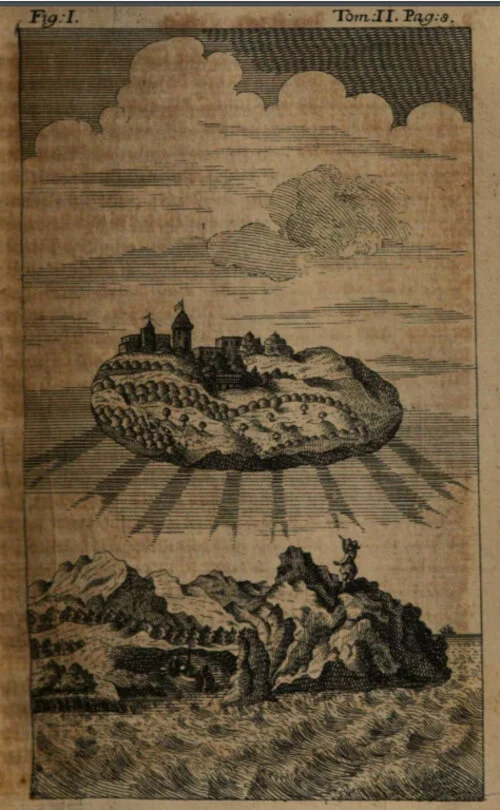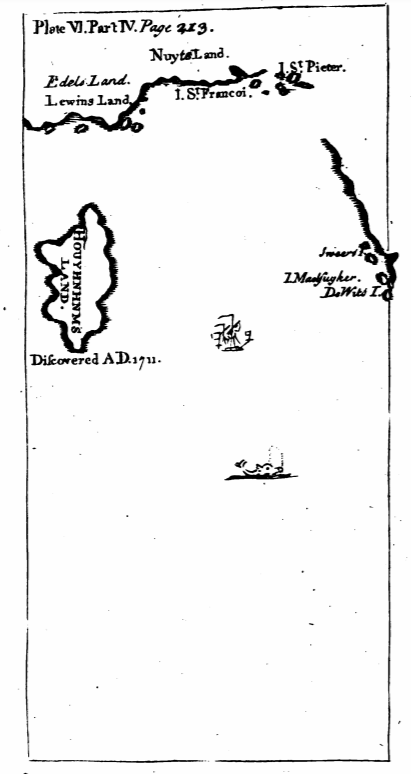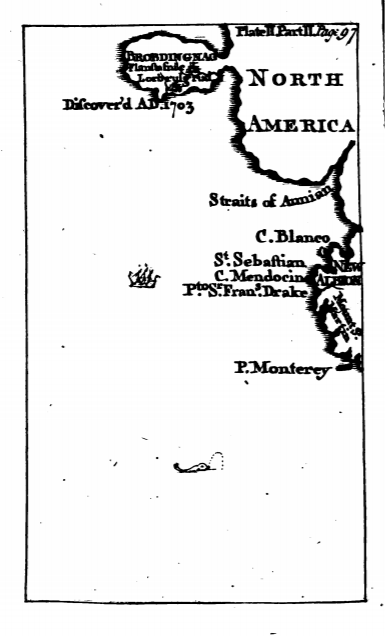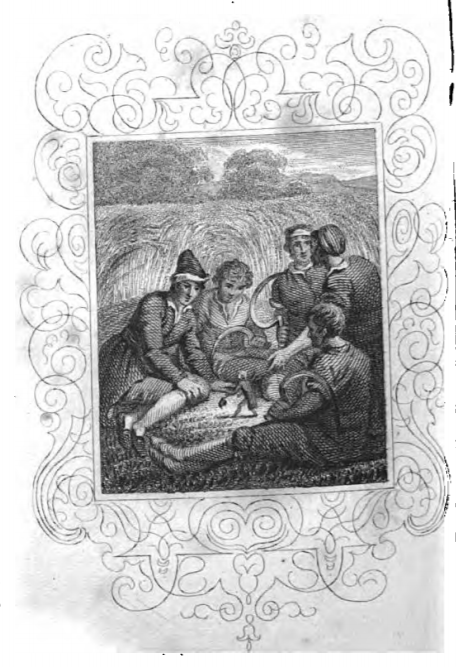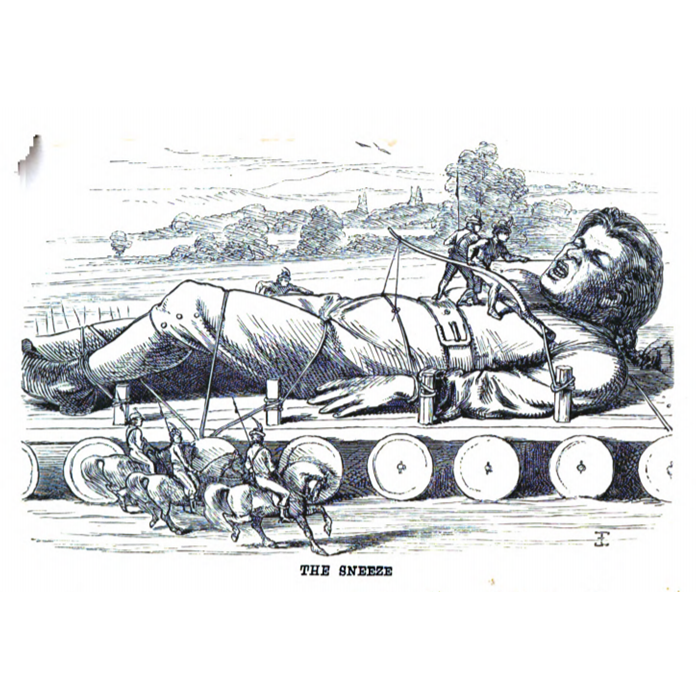
Gulliver’s Travels
Gulliver’s Travels, published in 1726, is Jonathan Swift’s most widely known work. Lemuel Guillver is a surgeon who travels to fictional lands, encountering inhabitants of different sizes and temperaments. The episodes related in Gulliver’s Travels comprise a biting satire that critiques several aspects of society, including misogyny, bureaucracy, and wasteful academic pursuit. After being stranded by a pirate attack, Gulliver is rescued by the flying island of Laputa. The Laputians are a learned albeit impractical people, fixated on costly and unnecessary experiments, like softening marble to use as stuffing for pillows. They study mathematics and astronomy, among other subjects, and have learned how to magnetically levitate and move their small, circular island. The satire reflects the perception that certain forms of knowledge and science being conducted in eighteenth-century Europe held little to no value or would have no meaningful objective.
Illustrations of Laputa reflect the movement of the island in different ways, which makes this episode a fascinating study of the period’s artistic development as image producers attempted to represent movement. Some images, like the Stuttgart 1843 and the London 1865 editions, choose to mimic the scientific yet useless nature of the Laputians’ idiosyncratic approach to knowledge, employing complex diagrams to demonstrate the island’s simple movements. Images like those belonging to the Hamburg 1727 and Stuttgart 1829 editions employ more traditional ways of conveying movement, implying its action with lines.
CEMVC Gulliver’s Travels Collection
Motte, London (1726) (vol. 1)
Motte, London (1726) (vol. 2)
von Wiering, Hamburg, (1727)
von Wiering, Hamburg, (1727) (vol. 2)
von Wiering, Hamburg (1728)
von Wiering, Hamburg (1739)
von Wiering, Hamburg (1746)
Bathurst, London (1747)
Bathurst, London (1755)
Gessner, Hamburg (1761)
Gessner, Hamburg (1762)
Jones, Glasgow (1826)
Allman, London (1830)
Krabbe, Stuttgart (1839) (vol 1)
Krabbe, Stuttgart (1839) (vol 2)
Krabbe, Stuttgart (1843) (vol 1)
Krabbe, Stuttgart (1843) (vol. 2)
Scheible, Stuttgart (1850)
Longman, London (1863)
Cassell, Petter, & Galpin, London (1865)
Kroner, Stuttgart (1870)
D. Noothoven van Goor, Leiden (1872)
Longmans Green, New York (1896)


